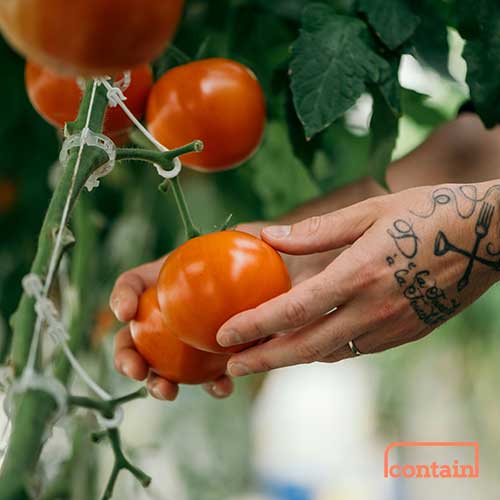July 23, 2024

When considering internal population migration, the first thing that comes to mind is usually the rapid trend towards urbanization. Rural students, in pursuit of the economic opportunities of the American dream, travel to the city to make their big break. Historically, urbanization has been the major migration pattern witnessed across both developed and developing nations. However, in recent years, the pandemic has flipped this common motif. As cities became hotspots for the pandemic and more remote work opportunities became available, Americans began an exodus towards rural areas. Building off our previous blog on rural migration, we dive into the trends around domestic population shifts and the implications for our investment goals.
Analyzing Recent Migration Patterns
Per a recent USDA study, the US rural population has started to grow after almost a decade of population loss. From July 2020 to June 2022, rural populations experienced a growth of a quarter percent (USDA). As more people move out, a potential move to rural areas has become top of mind for many city-dwellers. At the end of April 2020, a Harris Poll found that almost a third of city residents in the U.S. were strongly considering moving out of urban areas (U.S.A. Today). This is particularly pronounced among young people, as CNBC reports that 31% of young adults relocated out of urban centers during the pandemic (CNBC).
On the other hand, urban populations have increasingly stabilized. Domestic migration out of urban areas actively decreased from 2019-2022 (see graph above). While overall migration to urban areas is still upward trending, this is only occurring due to significant growth in international migration into urban areas (USDA).
Going Rural: What are the Major Motivators?
Cost of Living
Living in urban areas is often associated with higher goods prices, higher housing costs, and overall higher expenditures. For instance, the proportion of the population that experiences housing cost burden (defined as spending over 30% of income on housing costs) is almost 10% greater in urban areas than in rural areas (University of Minnesota Rural Health Research Center). Especially during the pandemic, where inflation drove prices to new heights, the desire to move to more affordable rural locations prompted a shift away from urban areas.
This is prompting a shift in housing decisions. A 2023 report from Fannie Mae found that affordability has become the top factor in people choosing where they live. It handily beats out the previous number one priority of choosing a nice neighborhood (Fannie Mae). For rural communities with traditionally low prices and housing costs, this will likely initiate rural migration patterns in years to come.
Quality of Life
City life is often associated with stress, pollution, and a competitive lifestyle that is increasingly driving people toward urban areas. The 2020 World Happiness Report finds that while differences do exist across different regions, in North America, rural populations report higher levels of life satisfaction (World Happiness Report).
Remote Work
Remote work is becoming increasingly available across the U.S. Thirty-five percent of workers reported in 2023 that they worked either fully or partially remotely. This is associated with an increased willingness to relocate. In 2023, the proportion of remote workers who would be willing to relocate or increase their commute increased to 22% from 14% just two years prior (Center for Rural Policy and Development).
A traditional benefit of city living is the higher salaries associated with working there. However, as remote work picks up, these benefits are increasingly accessible regardless of where one resides.
Importantly, many of these benefits afforded by rural migration are expected to continue. Remote work is increasingly normalized and greater income equality continues to drive differences in the cost of living between rural and urban areas. Therefore, as we consider the needs of the growing American population, perhaps a new rural focus is necessary.
Potential Pushback on Rural Migration?
While these trends have broadly improved public perception of the rural lifestyle, there has been some pushback, especially from recent movers. Particularly among Gen Z, used to the city social scene, moving to extremely remote areas has created new struggles. Some miss social opportunities and feel detached from their surroundings. Meera Mehat, a psychologist in London, notes that connectivity can be limited in rural areas, driving feelings of isolation and deteriorating mental health. In already tight-knit and more isolated rural communities, coming in as an outsider can be a very intimidating experience. Therefore, most migration by younger populations has been to less isolated communities, often within a reasonable distance from a city.
The Impact: How Does this Affect Our Rural Investment Space?
Considering mobilization towards rural areas, rural development is opening up as a major potential investment space. As we considered the biggest areas for investment opportunity, three major themes have stood out:
- Reshoring. Tech that has succeeded in other countries, particularly those with strong rural economies, could be applied to the U.S. rurals.
- Remote Services: Rural growth necessitates expansion of rural services like telehealth, e-commerce platforms, and telebanking. Investing here would support rural communities and potentially supercharge the desire for more people to move rural.
- Rural Manufacturing: As the rural population expands, so does the need for innovative and sophisticated manufacturing approaches. It offers the prospect of small scale profitable manufacturing.
The movement towards rural areas has kickstarted a rural revitalization. We envisage plentiful opportunities to support these communities as they grow.

Indoor Agriculture Pivots to Home Gardens as Vertical Farming Failures Drive Strategic Reevaluation

Zordi Series B and May 2025 Indoor Agriculture Developments

Freight Farms Bankruptcy and iUNU’s $20M Raise Highlight April’s Indoor Ag Contrasts

Freight Farms Resources: Indoor Ag Companies Stepping Up to Support Freight Farmers

How to Finance Your Hydroponic Project in 2025: Finding Opportunity in a Shifting Market

Indoor Ag’s New Reality: Practical Advice from Investment Banker Adam Bergman

Plenty Unlimited bankruptcy dominates March’s indoor ag news, overshadowing new farm plans

80 Acres Farms secures $115m, Square Roots expands to Japan, and indoor ag sees farm shakeups in February

Robobees take flight, vanilla goes vertical, and a new IPO is on the horizon in indoor agriculture’s January

Canadian Agriculture Grants: 7 Funding Opportunities for Indoor Farming in 2025

Indoor Ag Outlook: Funding Trends and 2025 Projections
